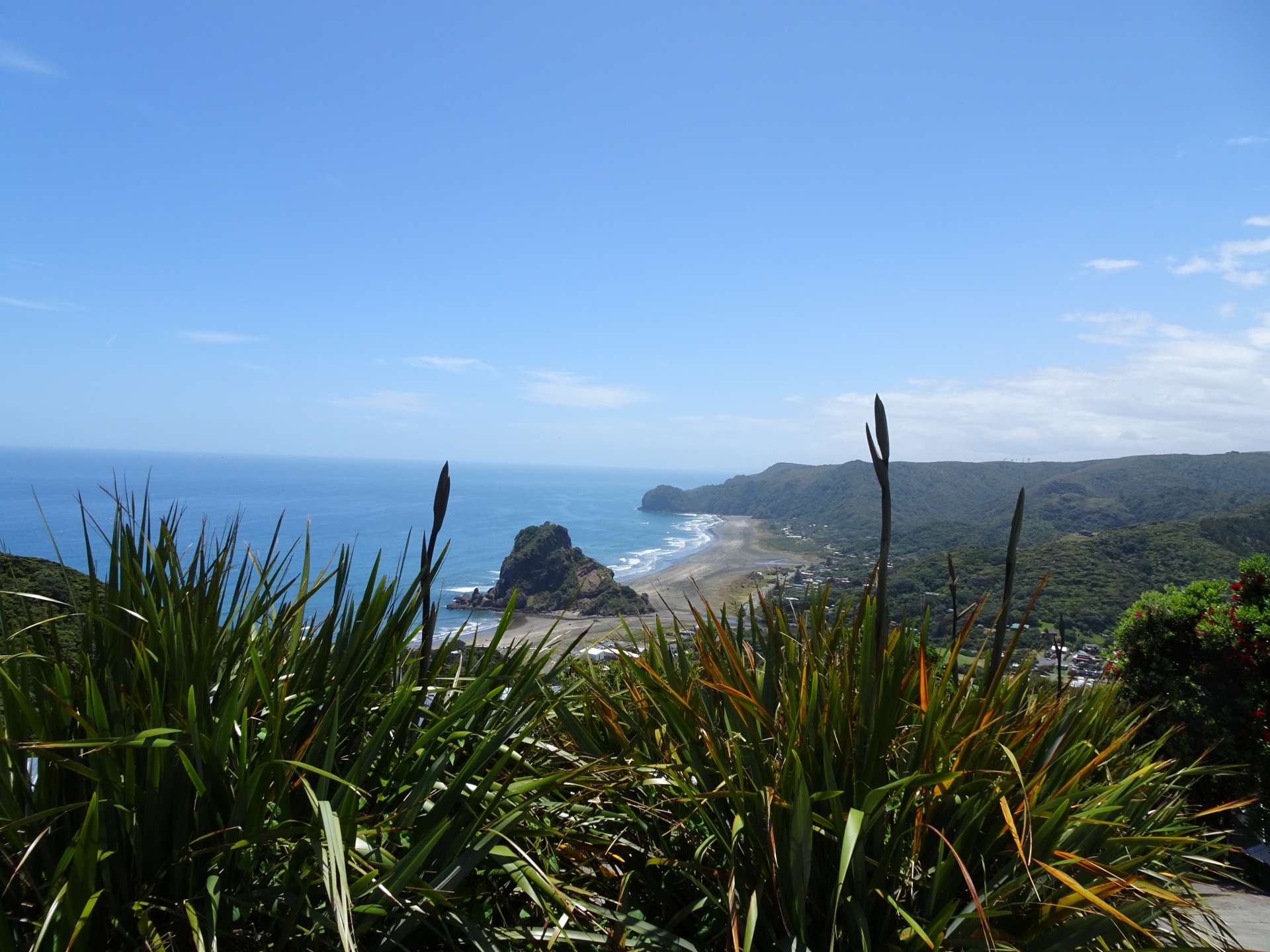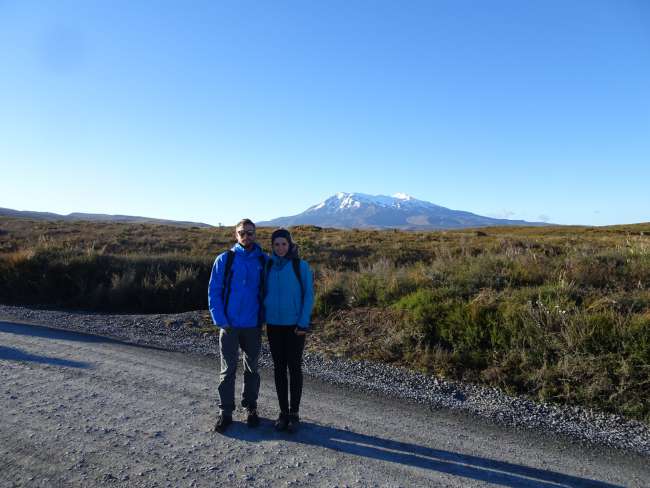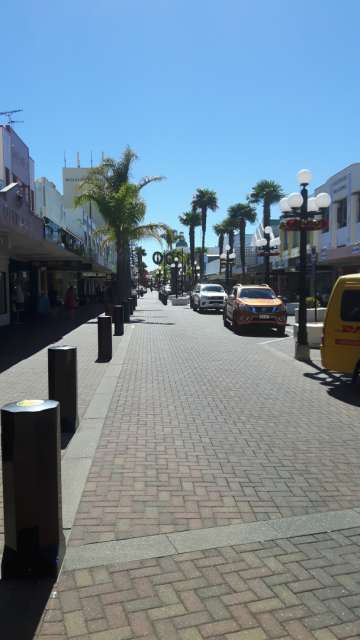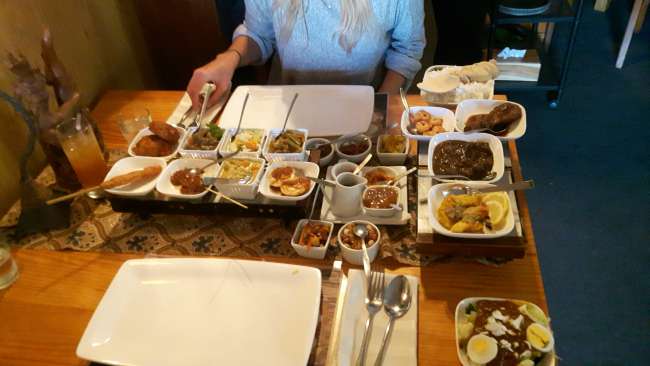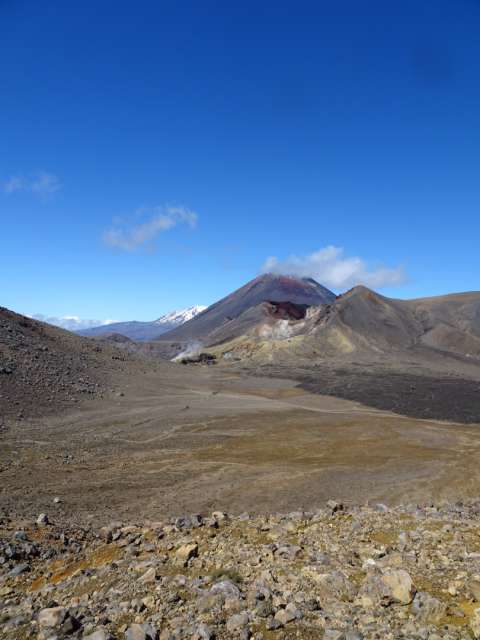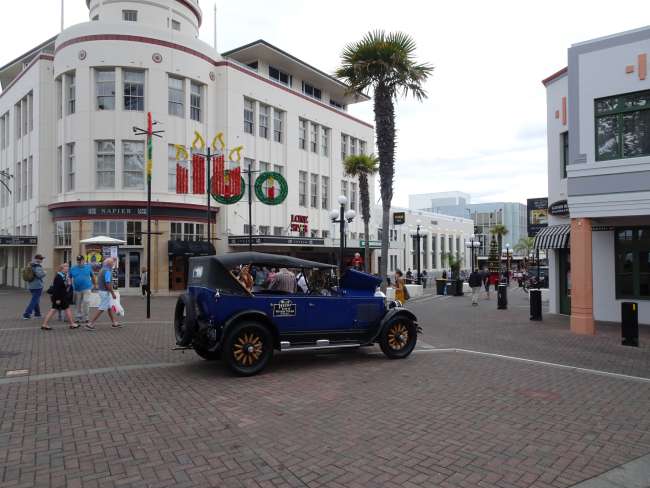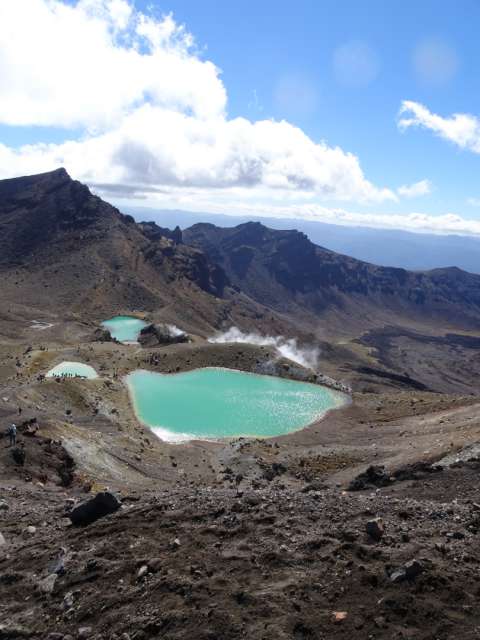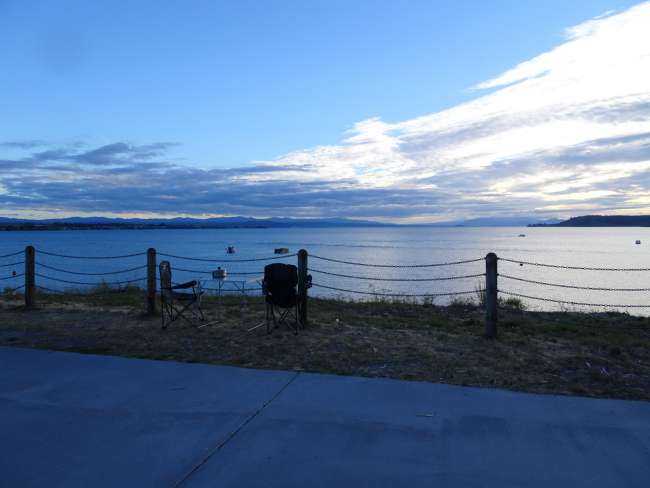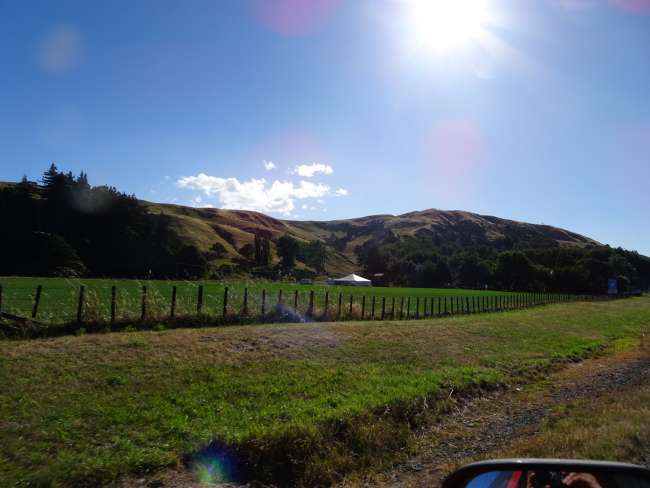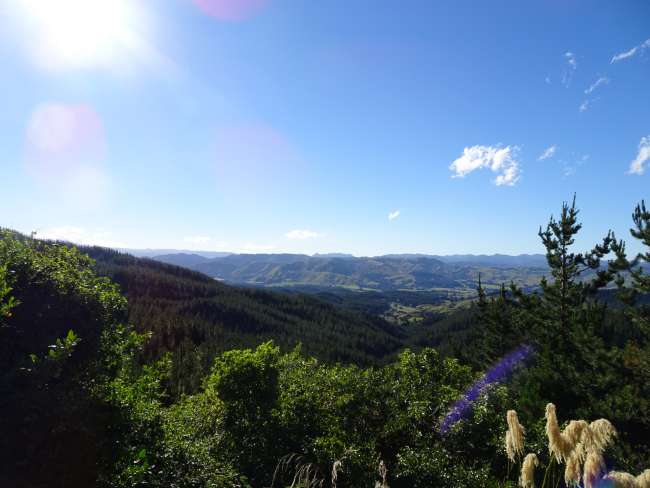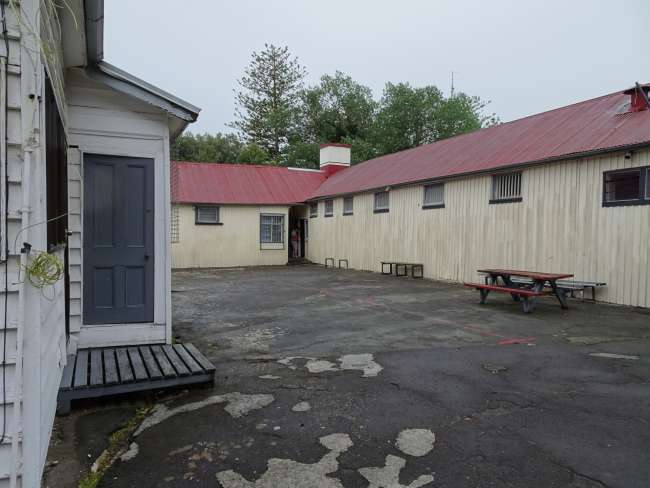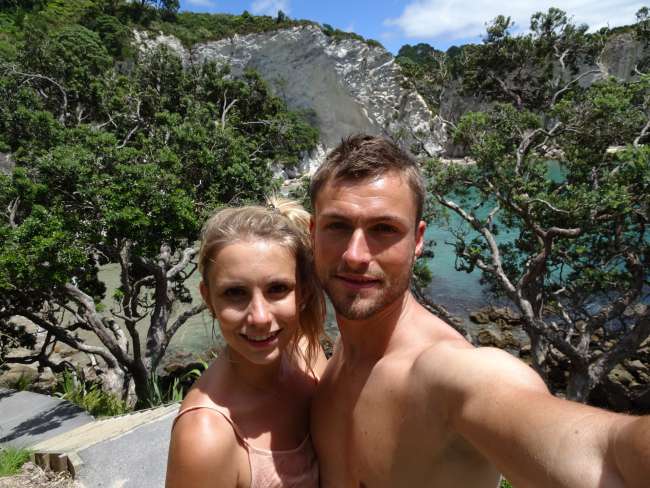
judithundwillaufentdeckungsreise
vakantio.de/judithundwillaufentdeckungsreise
Taupo, Napier and the Tongariro Crossing
Atejade: 08.01.2017
Alabapin si iwe iroyin
On New Year's Eve and the day before, we were in Taupo, New Zealand's largest lake, Lake Taupo. The lake is actually a huge former volcano crater, which has been quiet for several centuries. The area around the lake is predominantly forested, rather flat with snow-capped volcanic peaks in the background, and is intensively used for forestry. The endless forests also offered us a place to stay in the middle of nowhere, far from any paved road, for one night. Taupo itself is one of the prettier towns on the North Island and offers a few cozy cafes and a waterfront promenade by the lake. But apart from enjoying the day, there isn't much else to do here. So we spent most of the time in a cafe or dozing by the lakeside.
On New Year's Eve afternoon, we had a skydiving jump over the lake on the program. We were assured by phone that the weather conditions were ideal and we could come immediately. Off we went. First, we were instructed on how to behave during the jump, and then equipped with the necessary clothing and the rest of the equipment (helmet, life jacket). After we were assigned our tandem partners, we got on the plane. There we flew calmly for about 20 minutes over Lake Taupo. When we reached the 12,000 ft, we started getting ready step by step. Just before breaking through the cloud cover, we could see both ends of the huge lake. Despite the altitude and the tiny plane, we both felt very safe, and even when we stretched our legs out of the plane, the excitement was not as great as expected. The jump itself actually flew by for Judith. 40 seconds of free fall and then about 10 minutes of gliding. The gliding phase was at least as beautiful as the free fall, which we had imagined even more spectacular. The fall feels relatively slow and braked, and with all the acrobatics that you can do while free falling, there is still enough time to look around.
After the adventure of skydiving and the grand view, we made ourselves comfortable by the lake again. In the evening, we cooked directly on the shore and then watched the public New Year's Eve fireworks over the lake from the front row. A not so exaggerated but all the more tasteful spectacle in a wonderful setting.
As bad weather was forecast for the interior of the country and the west coast for the next few days, we decided to drive to the sunnier east coast to the Art Deco town of Napier, which is located directly by the sea with a beautiful beach. Napier was almost completely destroyed by a severe earthquake in the late 1930s and was then rebuilt uniformly in Art Deco style and has been preserved to this day. A truly enchanting sight with many cool cafes and small shops. The climate there is very mild, a bit like the Mediterranean, with pleasantly warm nights and lots of sunshine. A really charming place where life takes place outside, nestled in a landscape of countless vineyards between gentle hills covered with slightly sun-dried grass. In Napier, we rented bicycles, visited Napier Prison, and went to a swimming pool to escape the rain, which had also reached the east coast. This only worked to a limited extent, because as it turned out, it was a swimming pool that consisted only of an outdoor area. But at least with hot pools, a sauna, and a steam bath. In the evening, on the recommendation of the Lonely Planet, we went for an Indonesian meal. The slightly spicy and very varied food, consisting of 28 small individual dishes, was extremely delicious. We spent two nights on a free parking lot right by the beach with a wonderful sea view, including a dreamlike sunrise.
When the weather improved in the interior of the country, we drove to Tongariro to cross the volcanoes of the Tongariro Alps. The night before, it was already very cold in the valley (about 0 degrees), which prompted us to dress warmly for the upcoming tour. The alarm clock rang at 5.15 am and at 7.30 am, after a hearty porridge breakfast and with a small packed lunch in our bags, we started. With bright sunshine and low winds throughout the hike, the tour with its 20 km and about 900 m of elevation gain felt more like an extended walk than an exhausting mountain crossing, despite some slippery sections. The volcanic landscape with its craters and steaming holes was impressive. The huge craters, some of which were filled with water, give an idea of the enormous power of a volcanic eruption. The Tongariro is still an active volcano, which had a small eruption not too long ago. Despite the fantastic weather conditions, we had had enough of the cold after the tour and quickly left Tongariro National Park towards Wellington at the southern end of the North Island.
Small addition: Here in the middle and south of the North Island, there are now actually more sheep than other residents. Stereotype fulfilled :)
Alabapin si iwe iroyin
Idahun

Awọn ijabọ irin-ajo Ilu Niu silandii
